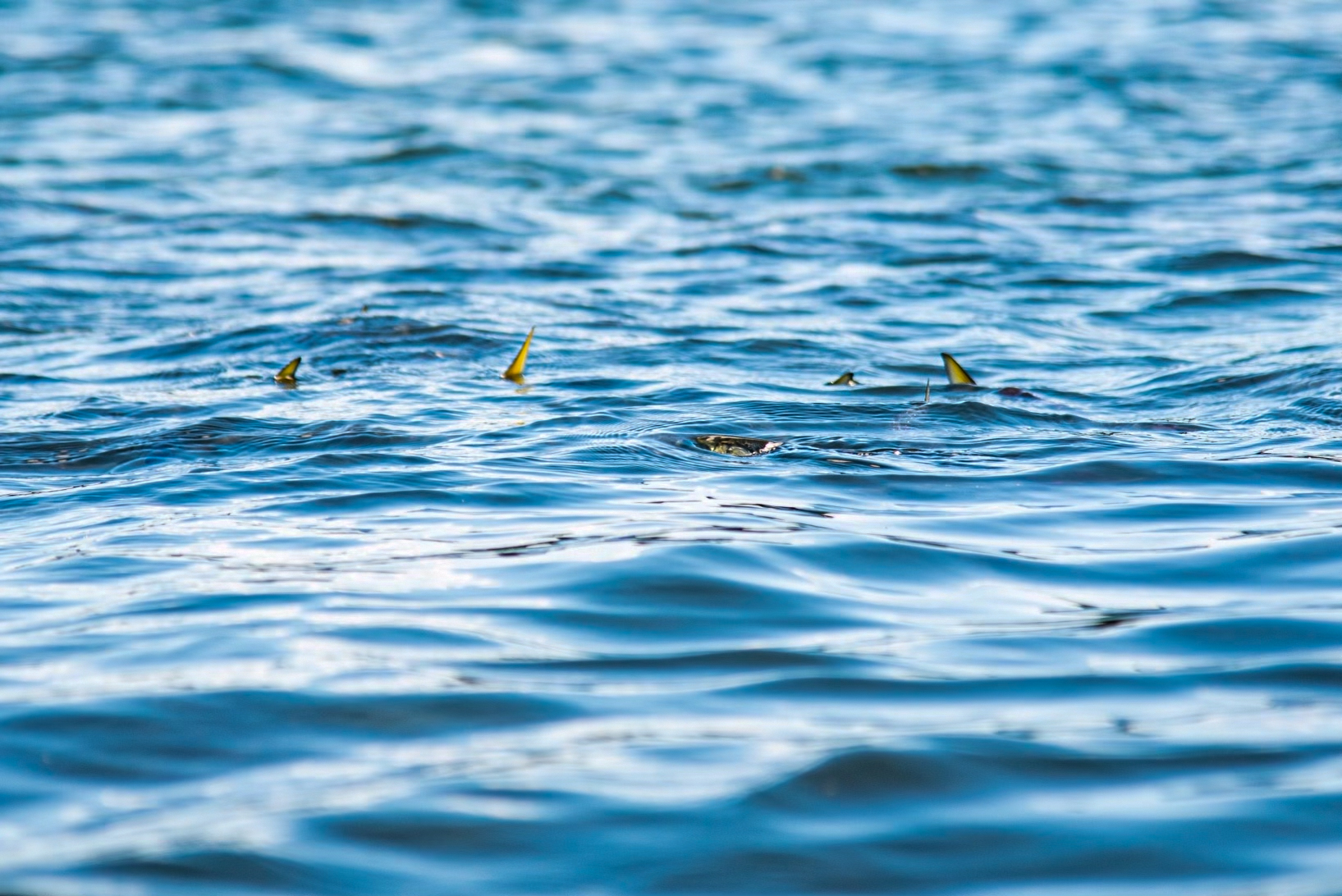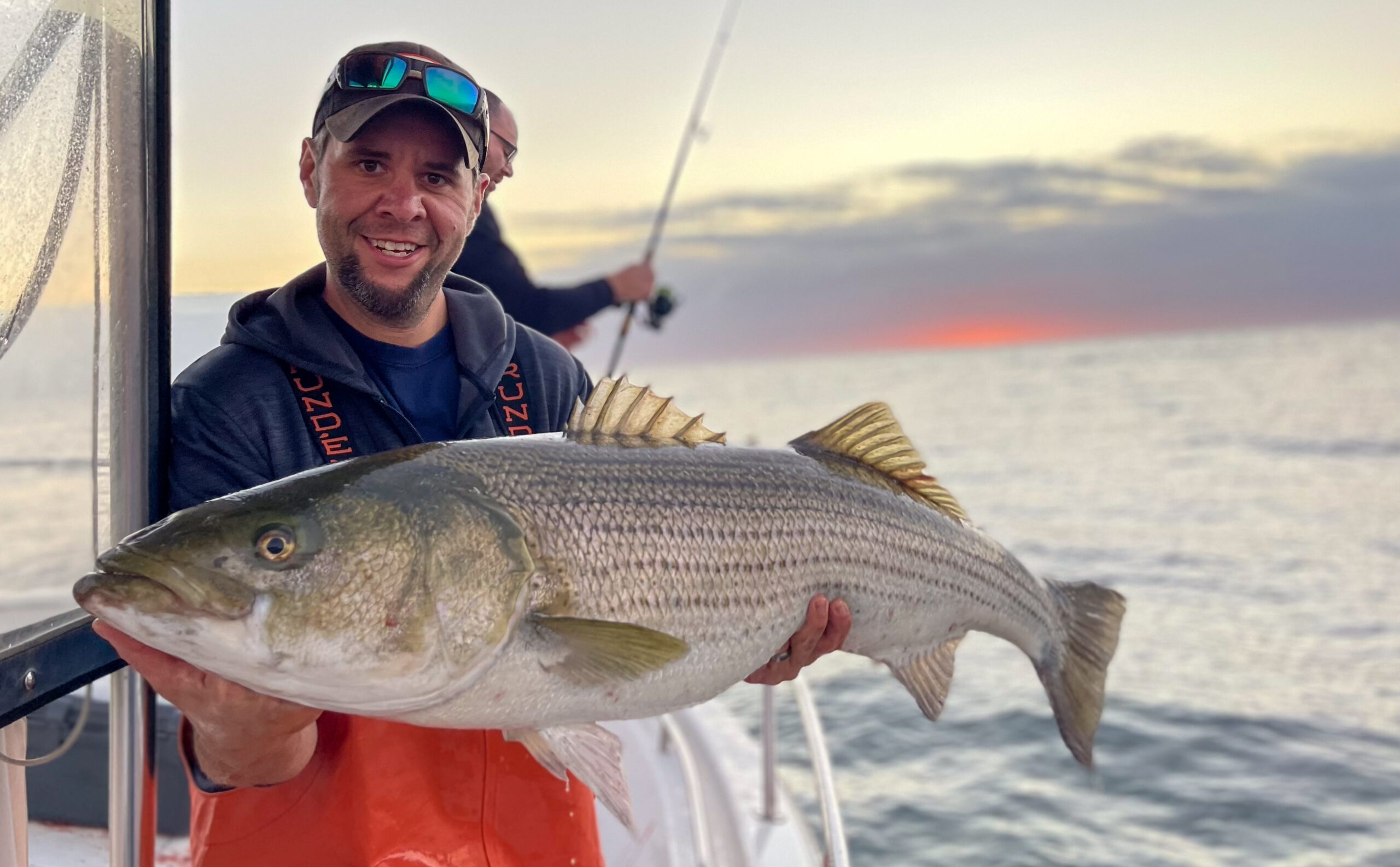LIVE BAIT is cheating. If I’ve heard it once I’ve heard it 10,000 times. The level of cheating, of course, varies by species and age. Any child under 15 can use live bait for whatever he or she wants. A grown man using live shiners for largemouth bass isn’t even considered a bass fisherman by most bass fishermen. Likewise, people who lean on live bait for trout are unrefined simpletons in the eyes of the flyfishing masses. Live suckers for muskies are kinda-sorta acceptable, though the fish they catch are never held in the same regard as the ones that slam a glide bait on cast 9,999.
For inshore saltwater targets across the country live bait is more accepted, though still often associated with anglers looking for meat in the box. Where I live in the Northeast, you want a custom wooden plug—preferably a topwater—hanging out of a big striper’s mouth when you post it on social media. If you got on a good jig bite, you’ll let all your followers know. But catch one on a live menhaden, locally known as bunker, and the average striper guy won’t deny the method, he just won’t bring it up at all in the caption. Within a few comments, someone will lob a “livie?” or “bunk?”
When this happens to me, I reply with a fervent “yes,” because in my opinion, fishing these massive live baits is one of the most thrilling ways to target striped bass. You can call me a cheater, you can call me lame, but what you can’t call me is unappreciative of how the comeback of this baitfish has changed striper fishing for the better.
The Ghost of Stripers Past
As a child in the late ‘80s and early ‘90s, striped bass were practically a myth. In a nutshell, what I was told by my dad and many other older anglers was that there used to be tons of them and now there are none. Tough luck, kid, you missed out. All the tackle shops at the Jersey Shore still sold striper lures and pre-made striper rigs, there were still striper mounts in every seafood shack and marina, but I was convinced they were something I’d never catch.
I was probably 12 the night I was fishing a lighted fuel dock for weakfish when a striper swooped in behind my metal spoon. It wasn’t very big, maybe 24 inches, and it never opened its mouth, but I froze in shock. It was like seeing a ghost.
Decades of commercial and recreational over-fishing had taken a massive toll on the striper population along the entire Eastern Seaboard, prompting a moratorium, followed by a strict one-fish limit when I was a kid. The bass had to measure 36 inches or more which, during that era, may as well have been a 50-pounder. I wouldn’t end up catching a 36-inch bass for seven more years following that apparitional glimpse on the fuel dock.
By the early 2000s, thanks to years of careful monitoring and rule tightening, the striped bass population came roaring back to life. Anglers who fished for them in the late ‘70s and early ‘80s viewed it as nothing short of a miracle.
To grow big bass, you need big, protein-rich food. What many people forget—or maybe never realized—is without menhaden, the striper population couldn’t have rebounded as effectively. They are arguably the most important baitfish in the country, and not just for stripers. And because of their abundance, I transformed from a kid who hoped to catch one striper in his lifetime to a fisherman who calls it a bad season if I don’t land at least one weighing north of 40 pounds.
Striking Oil
Menhaden exist from the Canadian Maritimes to the tip of Florida, as well as throughout the entire Gulf of Mexico. Sizes vary, and the larger specimens measuring up to 15 inches are generally found in the northern part of their range. Though adult menhaden are typically smaller in the South where they’re referred to as pogies, they are still a critical food source for a plethora of inshore species like redfish, cobia, and jack crevalle. Menhaden are filter feeders that move in massive schools, engulfing plankton along the way. This gives the fish and extremely high oil content. The only problem is that this oil is coveted by more than just gamefish and marine mammals.
Menhaden have been fished commercially since the late 1800s when people figured out that their oil was much easier to procure than whale oil. Given the high concentrations of omega-3 fatty acids in their flesh, menhaden quickly became valuable to the animal feed industry. It was a key ingredient in chicken feed, and it’s still found in a variety of pet foods today. Humans also can’t get enough of the stuff, ingesting thousands of omega-3 capsules in the hopes of lowering their blood pressure and reducing their risk of heart attack and stroke. As the supplement grew in popularity along with an increasingly health-conscience world, menhaden ended up in trouble by 2012, just when the East Coast striper population was restabilizing. Though the fish were commercially harvested throughout their range, Chesapeake Bay and the surrounding waters were ground zero for the omega-3 industry and seeing that menhaden swim on the surface in schools that can be miles long, they were easy picking for commercial boats that employed vacuums to suck up tons of fish in a single pass.
By February 2013, the Virginia General Assembly has passed several menhaden conservation bills that would reduce the annual harvest within the state by 20 percent. This was significant, as it wasn’t uncommon for Chesapeake-based boats to travel north and south in pursuit of the fish. Meanwhile, other states on the Eastern Seaboard clamped down on menhaden harvests, including for commercial fishermen supplying bait shops and commercial crabbers. The efforts of states and groups like the Atlantic States Marine Fisheries Commission ultimately help ensure that menhaden schools have remained thick enough in striper territory that we’re reliving the glory days of the ‘50s, ‘60s, and ‘70s, in terms of the abundance of true trophy bass.

Good and Bad Vibes
The goal is always to find unhappy bunker. A school lazily plodding on the surface, sometimes with their fins poking out of the water, is not the money. What you want to see are bunker in a tight, spiraling circle. The water around them should be rippling as they nervously huddle together. This is a tell-tale sign that there’s something below them they don’t like. When you encounter a full-on assault, entire bunker schools will take to the air. There’s a woosh when it happens and a thunderclap when a striper opens a hole right in the middle of the chaos. The exciting part about fishing with these massive live baits is that they don’t catch small fish. If you’re bunker gets hits, chances are good that the hitter weighs at least 15 pounds. But how do you make your bait stand out when it’s surrounded by such an incredible biomass? It’s all about finding your rhythm.
If you got on a good jig bite, you’ll let all your followers know. But catch one on a live menhaden, locally known as bunker, and the average striper guy won’t deny the method, he just won’t bring it up at all in the caption.
Stripers tend to feed within bunker schools two ways. They either shoot into the thick of them with an open mouth, or they patrol the perimeter for injured or disoriented fish that have moved away from the safety of the group. One of the ways they find these loners is by sensing their vibrations. Healthy bunker moving as a school are going to emit a certain frequency of vibration. Meanwhile, a fish swimming against the grain, frantically in open water or with an injury from being bumped or swiped, is going to emit a different tone. Your bait is going to emit a different vibration simply because it has a hook stuck in it and is trailing a line. Where you place that hook, however, can change the music.
Live bunker can be acquired for bait by throwing a cast net and putting the spoils in your livewell, or with a snag hook—a giant treble hook with a lead bullet molded around it. Thanks to recent rule changes, it is no longer legal to stick a bunker with a snag hook and simply open the bail and start fishing, though you can retrieve the bait, re-hook it on a single circle hook and send it back out. The most common way to re-pin a bunker is crossways through the nostrils. While bunker flesh is relatively soft, the nose is rock hard, so this hook placement makes it very difficult for the bait to pull free or for a short-striking bass to rip it off. Short strikes, however, are fairly rare as stripers generally attack large prey headfirst. Nose hooking also allows the bait to swim most naturally, though the slight amount of tension created by the line is enough to alter its vibration.

My favorite way to hook a bunker is through the back, just ahead of the dorsal fin. This achieves two things. It keeps the hook far forward enough that a fish that attacks headfirst will still get the point, and it allows me to control the bait’s behavior more efficiently. Though you can add weight to your line, free lining bunker is very common. All you do is send the bait back out and keep a slightly amount of tension on the spool while it goes wherever it wants. But by hooking the bait through the back, I can make the fish change direction or turn broadside simply by locking the spool with my thumb momentarily to stop the bunker’s forward progress. When its steady swim is suddenly halted, it instantly sends out a different vibe, and this is often when it gets attacked.
Warning Signs
What make a bunker take so exceptional are the warning signs that it’s about to happen. You feel a steady, rhythmic tail beat, but suddenly it speeds up. Maybe you feel the fish starting to swim in short, erratic bursts—a sign that there’s a striper in pursuit. Quite often, your rod tip will thump hard just once, which means the bass has just tail whacked the bait to stun it. The pause only lasts a second or two before your line starts peeling off the reel at much higher RPMs than when there was just a bunker kicking away on the other end. These days, circle hooks are mandatory when using any natural bait for saltwater striped bass, and my preference is a size 9/0. Give the striper to the count of three before locking up the reel and letting that hook slide into the corner of its jaw.
There are, of course, hundreds of lures on the market that imitate bunker. But they are, in my opinion, much more challenging to find success with when the schools of live bait are thick. If you want to maximize your shot of pulling a genuine cow bass off the bunker, there is no easier way than leaning on livies—regardless of your skill level. Bunker have been helping rookies put up 40- and 50-pound bass ever since the striper population rebounded, and as long as we keep an eye on these vital baitfish, they’ll continue to provide an express ticket to striper glory.
Read more OL+ stories.
